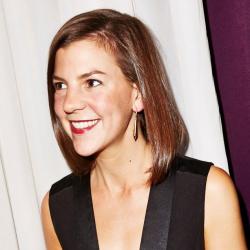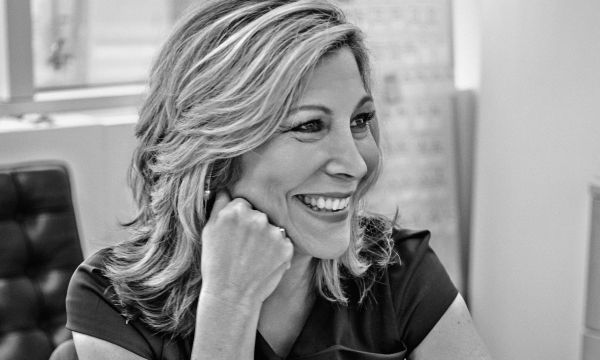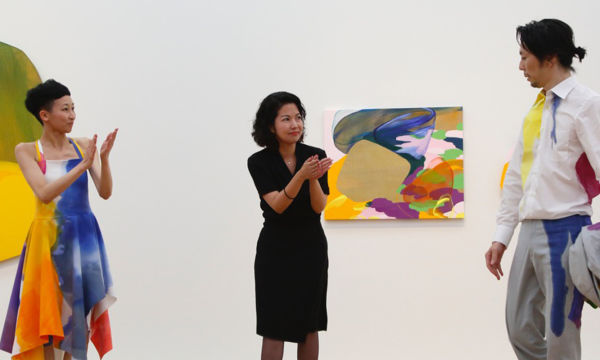Architect Louise Harpman Talks Creativity and Miniature Houses
October 27, 2017 | Filed in: Woman of the Week
As a young architecture student, Louise Harpman showed such promise that she was barely out of school when her professors asked her to come back and teach. Best known for sustainable designs such as the zeroHouse, a famous “off the grid” micro-dwelling that she created with former business partner Scott Specht, she recently split off to create her own firm, where she is working on an energy-independent apartment building called zeromicro and teaching at NYU’s Gallatin School of Individualized Study. She recently hosted us at one of her client’s homes to talk creativity, Japanese teahouses, and the magic of “Big Walks.”
I DIDN’T KNOW ANY ARCHITECTS growing up. My secret dream job was—and still is—to be a logistics manager for UPS. As a child, I was an avid pen pal, and after I met someone I would write to them. I thought that was a magical way of being in the world, being able to connect with people through the mail. I also have a design fetish for the old UPS delivery trucks, the brown ones that look like they have big, round eyes—I think they’re beautiful. On the tops of those trucks, there’s translucent plastic so that the drivers can see where the packages are, and what they’re looking for. They’re really nicely designed. I go down the rabbit hole when I get interested in stuff like that. Processes fascinate me.
I WAS RAISED IN A VERY MODEST HOME in Oklahoma City, Oklahoma, where there’s nothing particularly out of the ordinary—except that every day, I’d walk to school past this wild, crazy, unusual house. It was made out of green plastic, almost like a greenhouse, and had nine pointed peaks. It was on a regular old street, next to regular old ranch houses or two-story colonials. Everyone else had a lawn, but this house had succulents and rocks and blue jasmine. I thought, “That’s what I’m interested in—it’s not like everything else.” I later found out the architect of that house was Bruce Goff, and he was a wacky disciple of Frank Lloyd Wright. That house made a big impression.
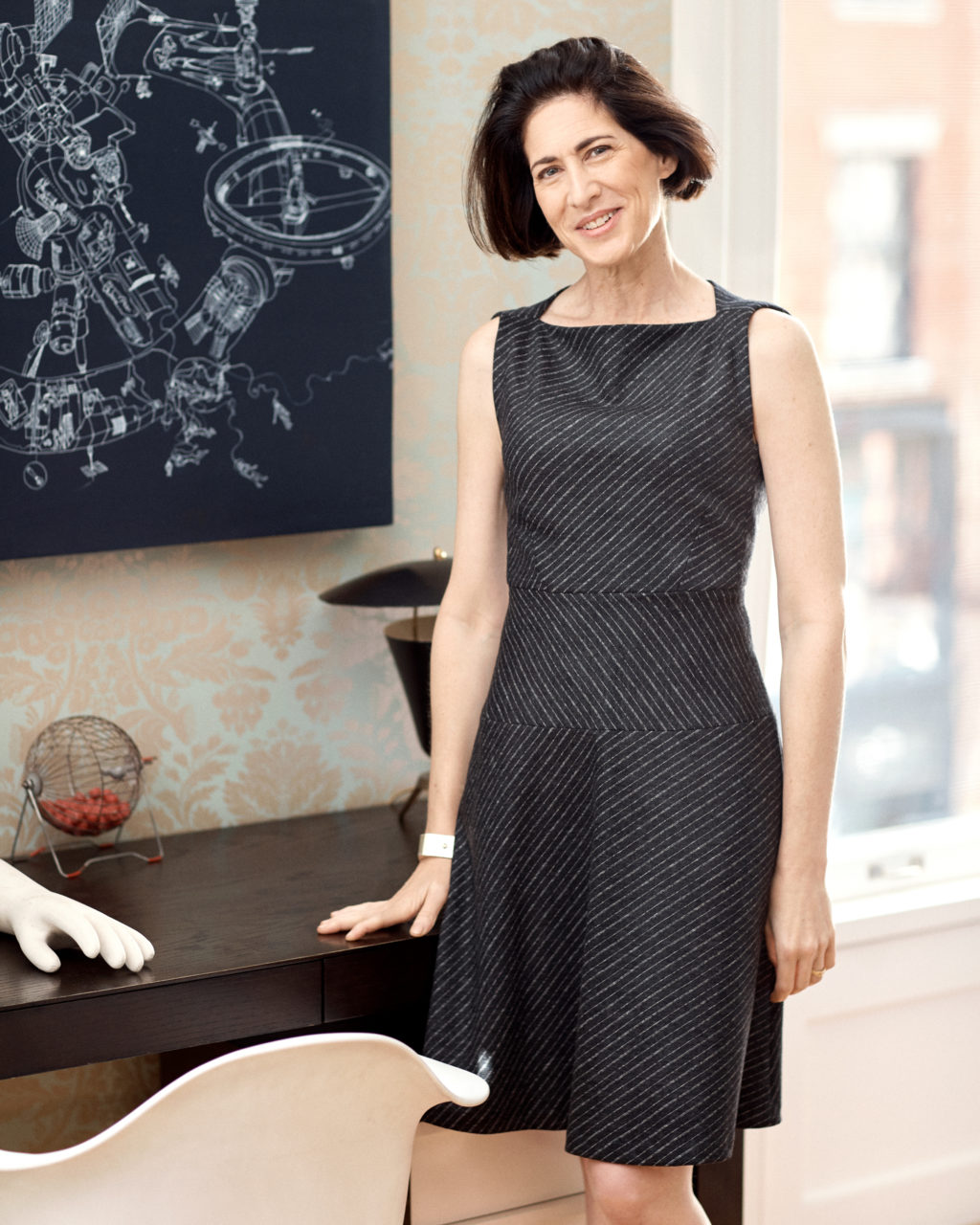
Louise wears the Cindy dress in etch stripe.
I GOT MY UNDERGRADUATE DEGREE in East Asian Studies from Harvard; as part of that, I lived in Japan for about a year and a half. While I was there, I studied 17th century teahouses, which are these gorgeous miniature houses built just for tea ceremonies. I’m interested in how architecture is a manifestation of cultural intention—for example, those teahouses were built for one particular ritual that was enjoyed by a certain sector of society. Living in Japan also taught me about how to make the most of the space you have, and also about creating the visual illusion of more space.
I THOUGHT I WAS GOING TO BE AN ANTHROPOLOGIST, so I went to graduate school for social anthropology at Cambridge, in England. I loved it, but I was lonely—the life of writing papers and reading all the time just wasn’t for me. So I came back to New York, worked for two years, and then went to architecture school at Yale. I was interested in architecture, but I didn’t know if I would be any good at doing it, so I gave myself the first year of school to see how it went. At the end of that year, I won a prize for Best in Class that was given to one student who hadn’t had prior architecture training. I thought, “Oh, this is a good sign.” I think you need these extra boosts of confidence sometimes.
ABOUT A YEAR INTO MY FIRST JOB at an architecture firm in New York City, I got a call from one of my former Yale professors. He told me that the architect Marion Weiss had just won a major competition to design the Women in Combat Memorial at Arlington National Cemetery, and therefore wouldn’t be able to teach at the University of Pennsylvania that fall. They wanted to know if I was interested in taking her position. I said, “Well, she’s much more established than I am.” And they said, “Well, she was the only woman teaching in this group of five men. They need a new person, and they really want it to be a woman.” I said, “Oh.” So I went, and I interviewed, and I got the job.
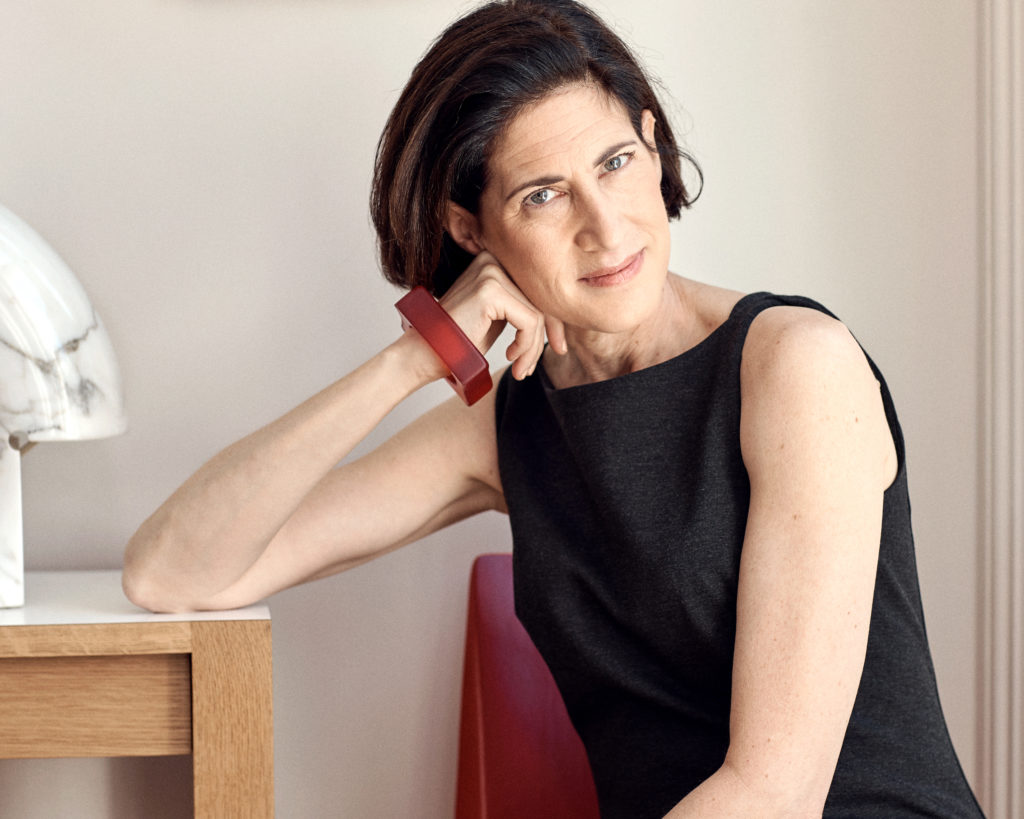
Louise wears the Lydia dress in cinder.
IT’S UNUSUAL TO START TEACHING so soon after getting out of school, but I really wanted to do it, and I worked extremely hard. Being very young, I dressed like I was older than I was. Dressing the part does give you confidence. For my second year of teaching, I went back to Yale, and that was trickier: I became colleagues with people who had been my teachers only two years before, so hardly any time had gone by. They still thought of me as a student, and yet I was faculty.
TEACHING HAS ABSOLUTELY INFORMED MY PRACTICE. It’s a hybrid life, with one foot in each camp—architecture practice on one side, and education on the other—but my favorite teachers when I was in architecture school were also practitioners. In architecture schools, you’re at the cutting edge of what’s going on in the profession. If you have a student who you think is really talented, you can hire them. The downside to teaching is that to be good at it, you have to put a lot of time in. There was often a tension about how much time I was spending in the office versus how much time I was spending in school.
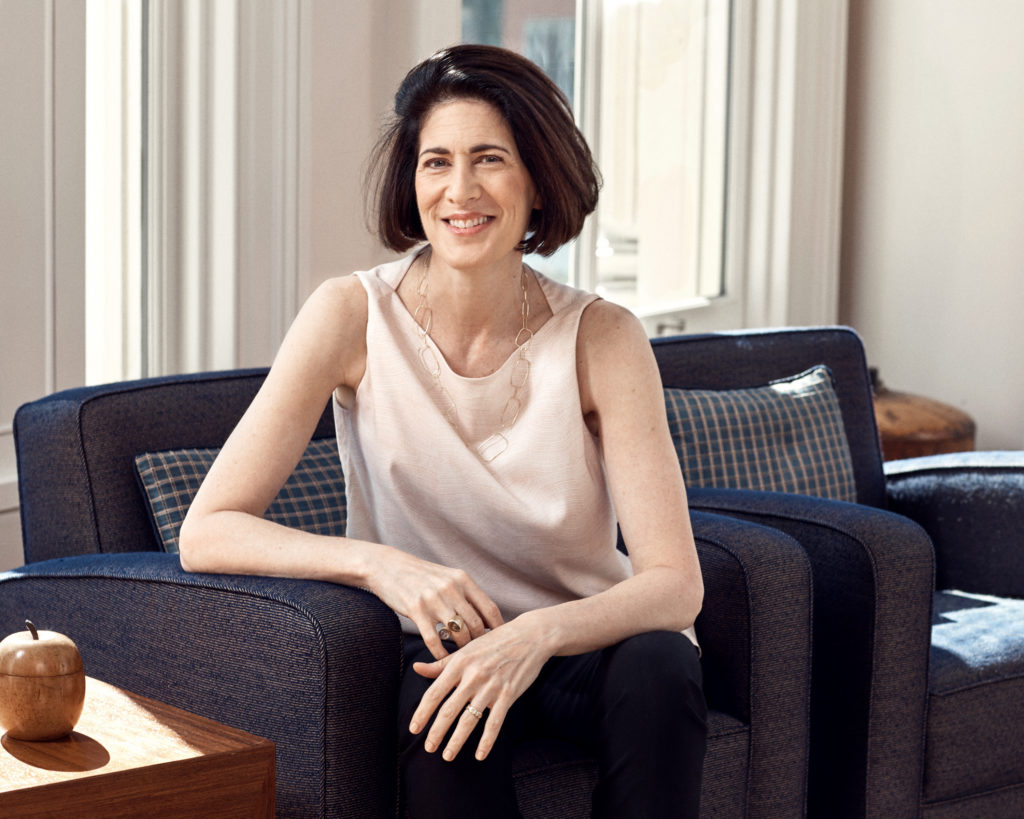
Louise wears the Sadie top in swish and the Foster pant in black.
TO BE A GOOD ARCHITECT, IT TAKES MORE THAN JUST TALENT. You also need a certain interpersonal sensibility. Whether it’s a private or institutional client, you’re talking about people’s hopes and dreams, and you have to ask searing, pointed questions. People might say, “We need this many square feet, and this is our budget,” but the real question is, “What makes you feel good when you walk into a room?” You’re almost like an anthropologist, in that sense. I think that the best architects and the best professors have that in common: You have to be a leader, but you have to get people to come with you. There’s an element of drawing people out.
FOR 20 YEARS, I WAS A PRINCIPAL at Specht Harpman, a firm I ran with my former partner Scott Specht. I left the practice about a year and a half ago to focus more on some longer-term research projects, and I’m now working with one private client at a time. Sustainability has always been a major interest. When Scott and I designed the zeroHouse, we wanted to promote the idea that you could live sustainably but also comfortably, without giving up luxury. The project I’m researching now is called zeromicro, which is an energy-independent apartment building full of micro-dwelling units.
PEOPLE OFTEN ASK, “How do you develop your eye?” I don’t know how one develops a sense of balance and proportion, but part of it is just exposing yourself and taking the time to notice things. As they say, “looking is free.” I care about creating clean, modern, tailored environments, where people feel comfortable. It used to be that coziness was almost uncool, but Scott and I cared about it. People want to have a place where they can thrive. I hope our spaces are calm and elegant, with clean lines.
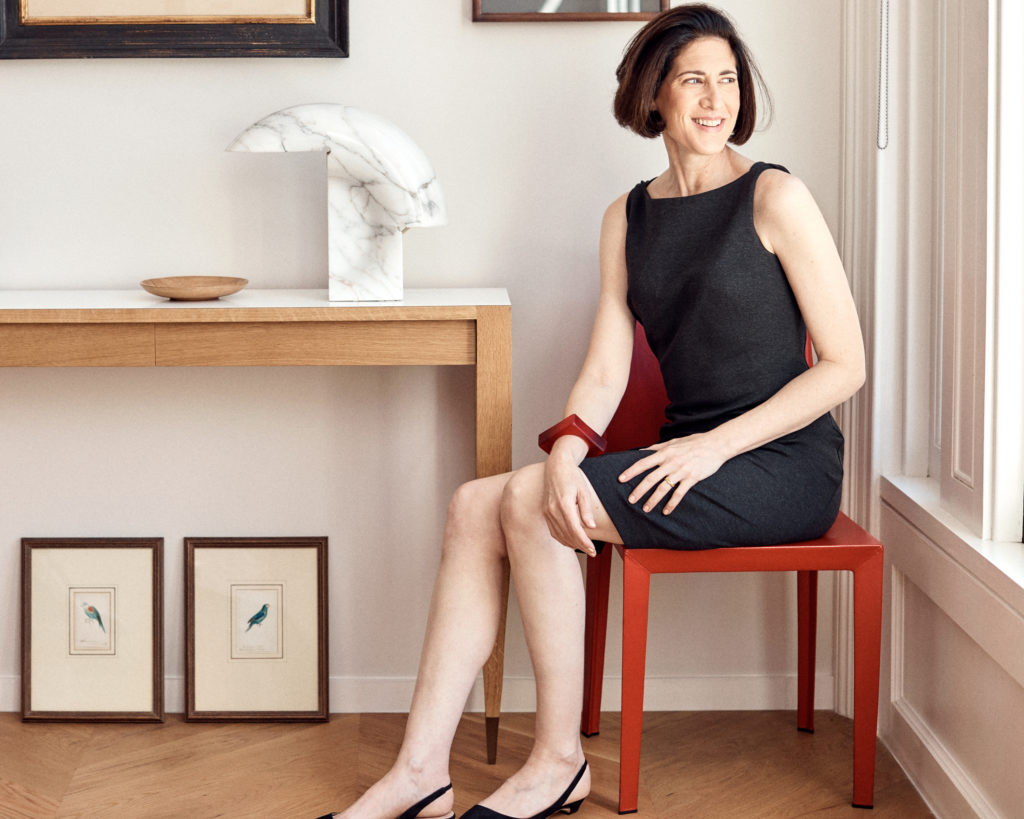
Louise wears the Lydia dress in cinder.
YOU KNOW WHEN YOU RE-POT A PLANT and you shake all the dirt off the bottom of the roots before putting it into fresh soil? That’s how travel feels to me—knocking off the old dirt. When I travel, I feel creativity gushing out. Whenever I get back from a trip, I take a fresh notebook and a new pen, and the scribbles and drawings just come. The question is, how do you find that if you’re not traveling? I always love walking the city, with no destination in mind. Just go. I do something called the Big Walk, where I take people with me and we walk for several miles. You see blocks and buildings that you haven’t seen before, and get an understanding of how the city connects, and how it developed over time. The first year, we walked the entire length of Broadway, tip to tail. Another year, we had about 80 people, and the police stopped me and said, “Where’s your permit?” I was like, “What?” And they said, “If you’re over 75 people, you’re a parade.”
IDEAS COME IN SO MANY DIFFERENT WAYS. You don’t exactly schedule creativity, and I’ll often get a good idea during downtime, whether I’m having dinner with my husband or talking to my mom. It’s a feeling like, “You know, I hadn’t put that together before.” I think a lot of people in creative industries feel that way.
Photographs by Jeff Allen.






